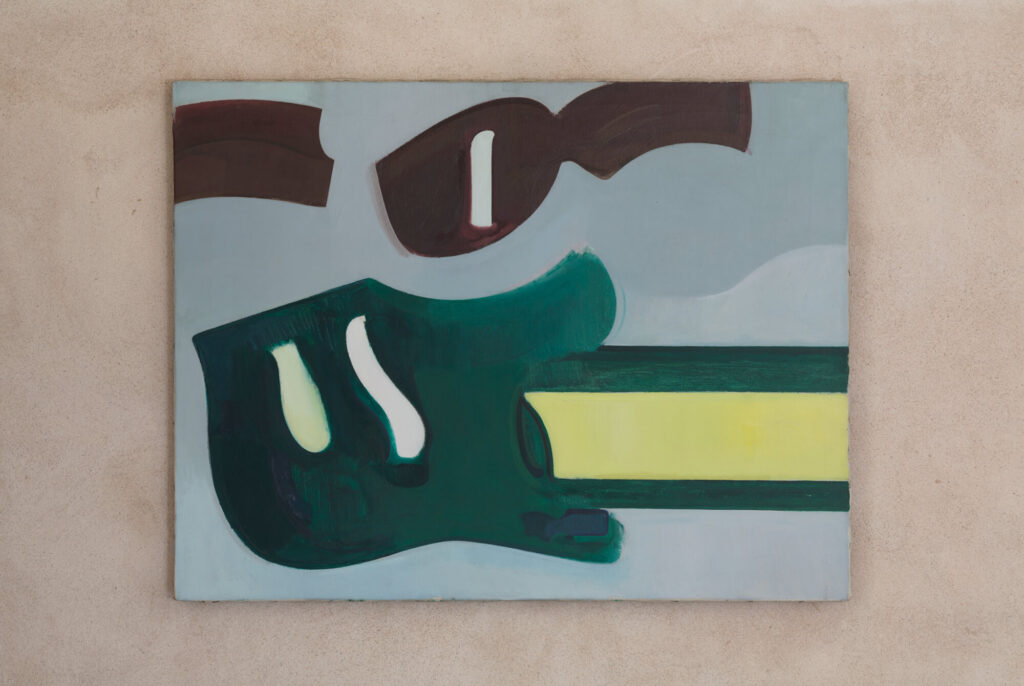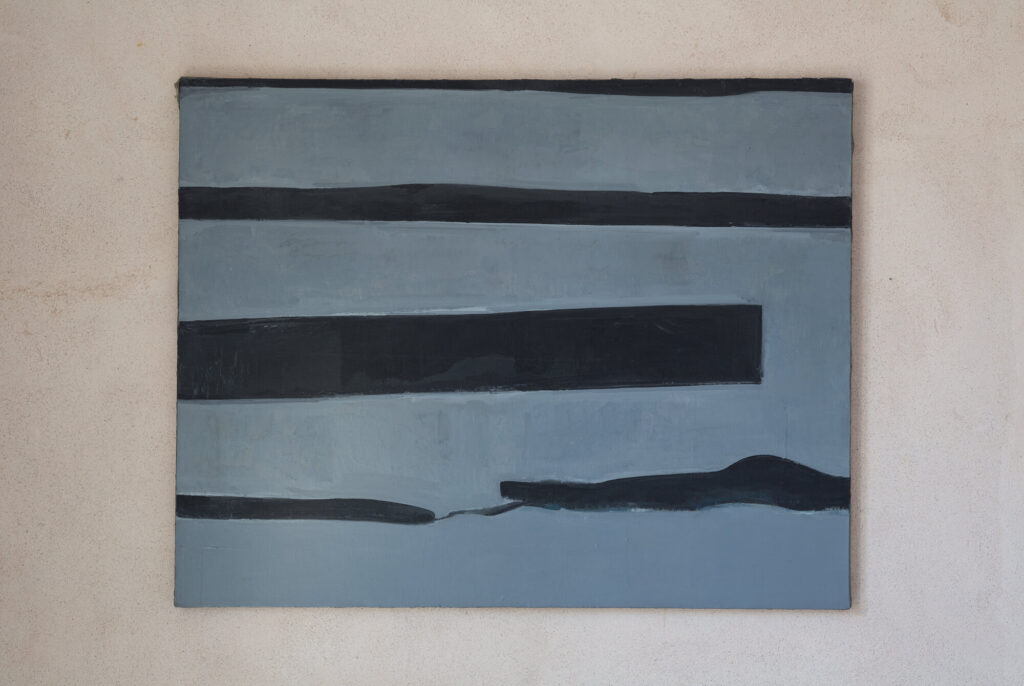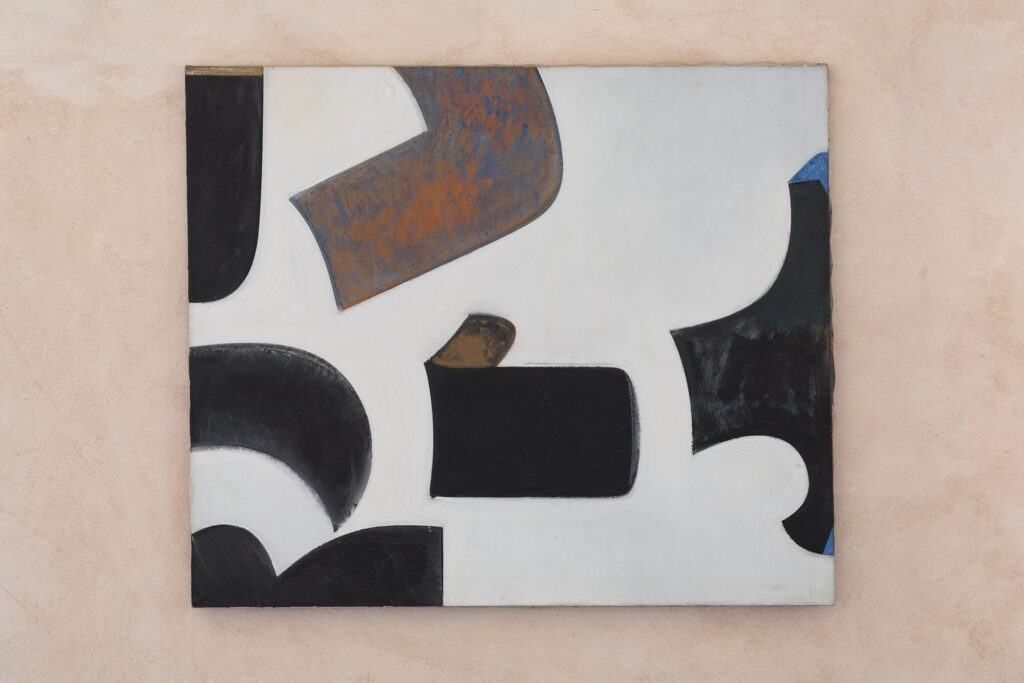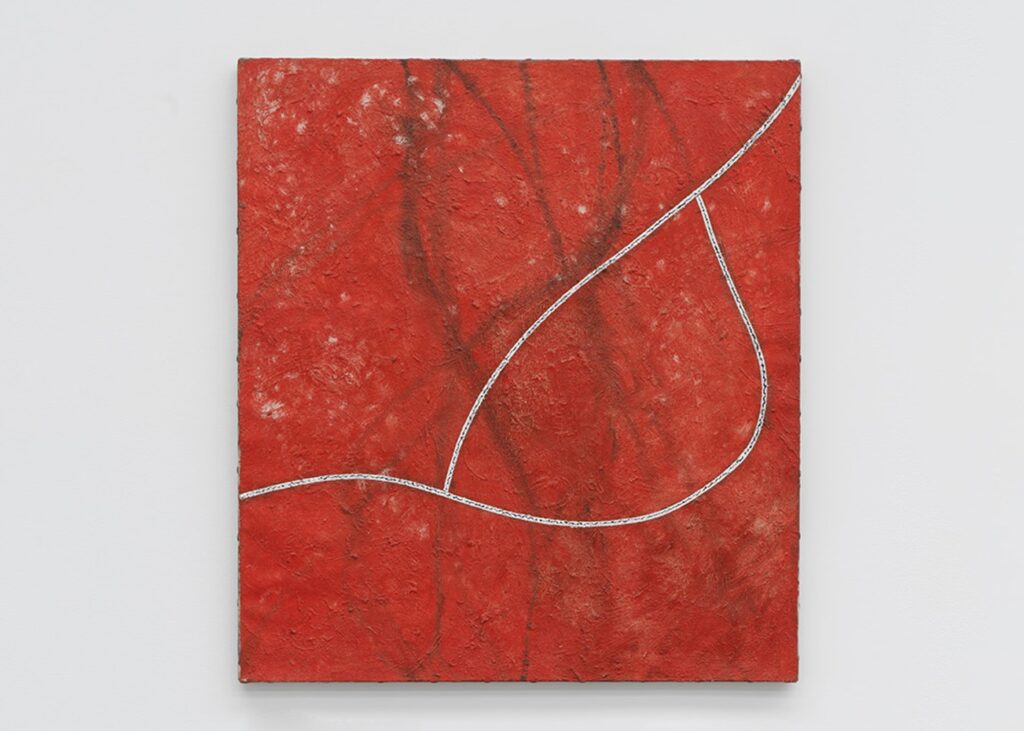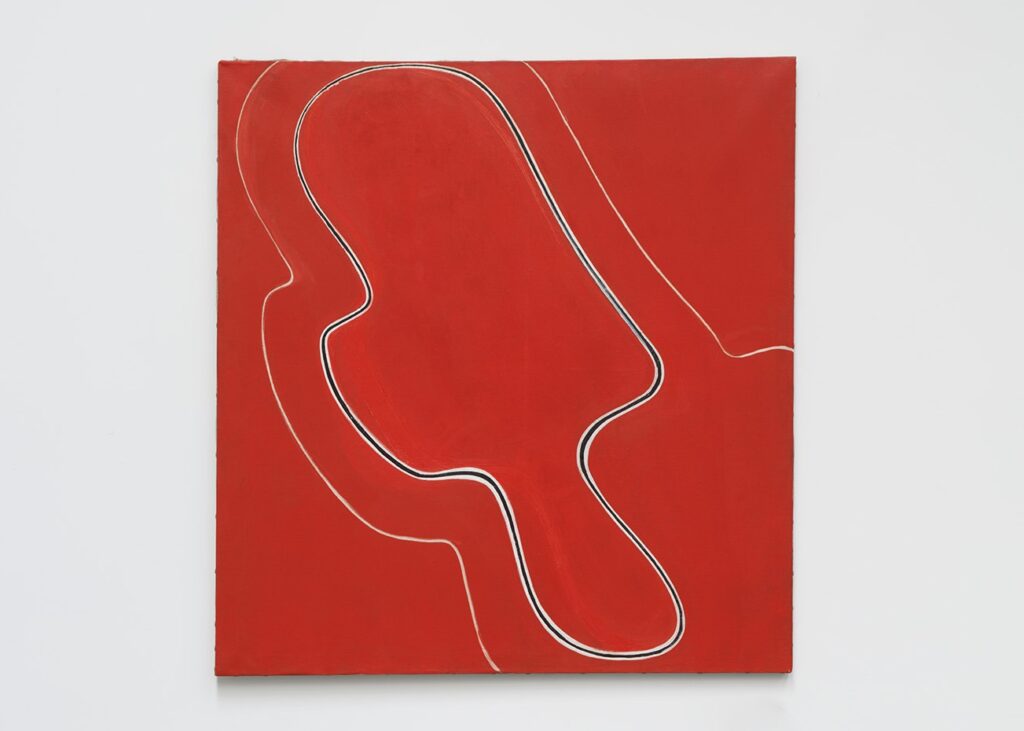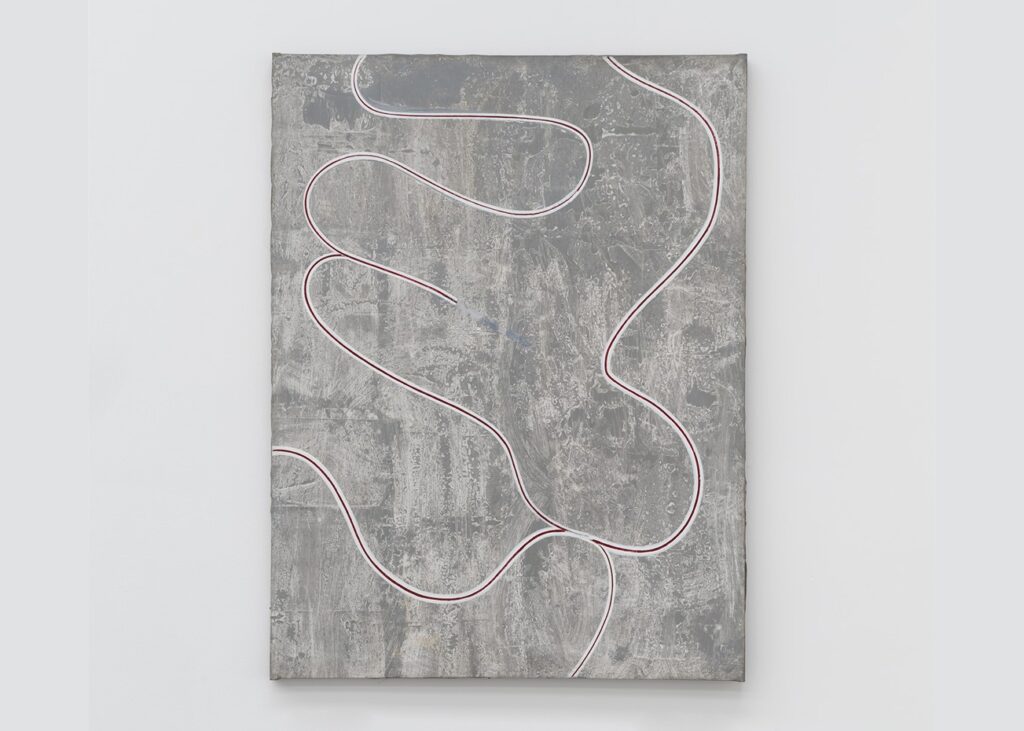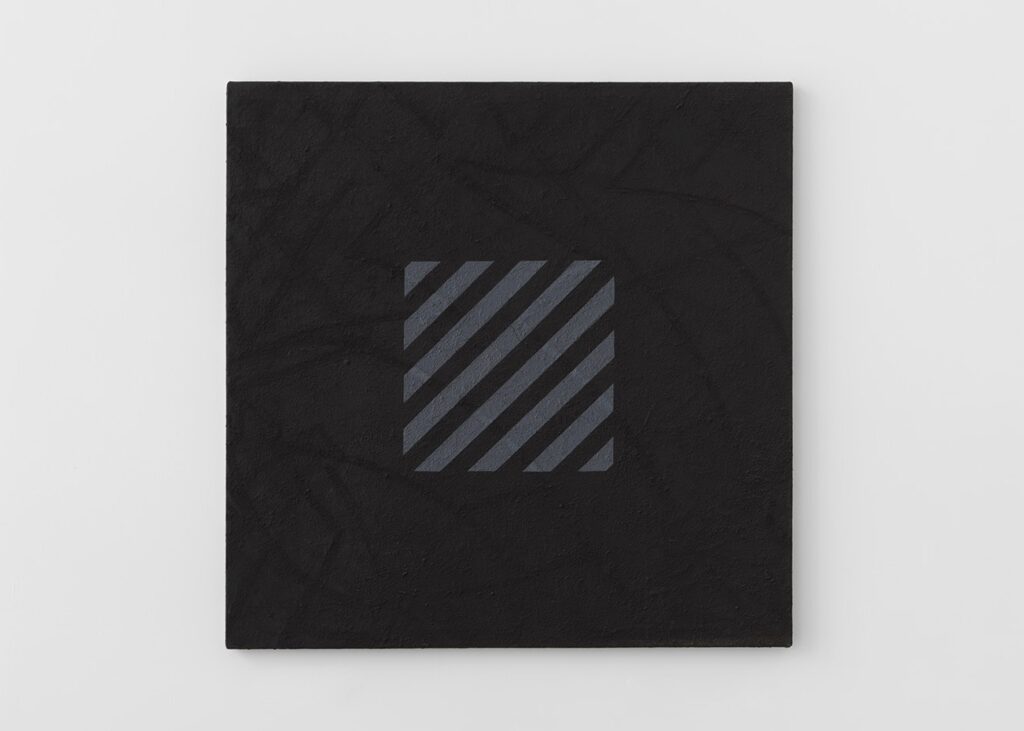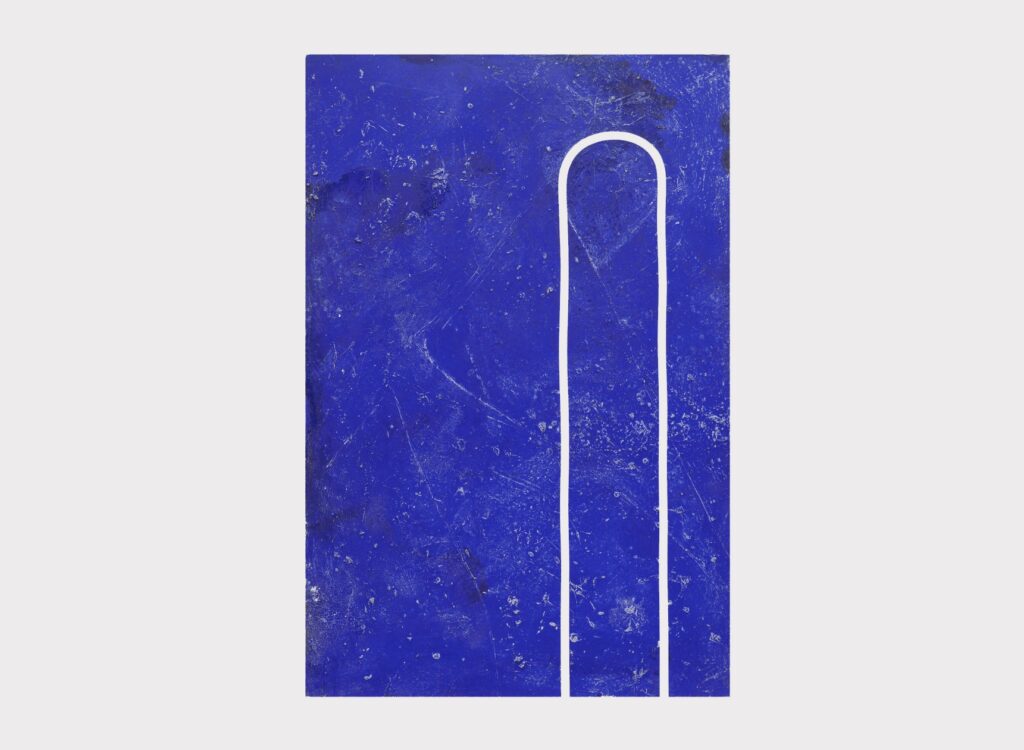Donald Judd started out making traditional art—drawings and paintings of landscapes and people. Through a slow progression this changed to the work he was known for later. Between the two points, the representational work and the mature, three-dimensional work, were the paintings where he determined what he wanted his art to do. The early paintings are blocks of color and shapes that are based on things and scenes that Judd saw, later he moved to abstract shapes without the references and this in turn became shapes on fields. In about 1959/1960 he started making lines on fields, this was the beginning of his own work, paintings that were their own and understandable all at once, immediate. After making paintings of straight, repeated lines he moved to placing objects within the paintings themselves in an attempt to magnify their “objectness” to move away from flat fields of color. From these objects he then transitioned to the early reliefs where the work projects off the wall and is less a flat painting than a three-dimensional object confronting the viewer.
Judd oversaw the publication of the Donald Judd: Catalogue Raisonné of Paintings, Objects, and Wood-Blocks 1960-1974, edited by Dudley Del Balso, Brydon Smith, and Roberta Smith, on the occasion of his retrospective exhibition at the National Gallery of Canada, Ottawa, in 1975. A comprehensive catalogue raisonné of paintings, objects, and wood-blocks is currently in the research phase.
